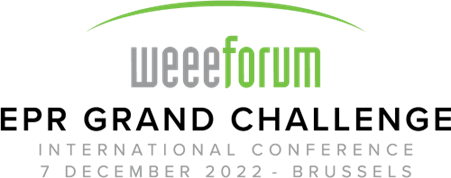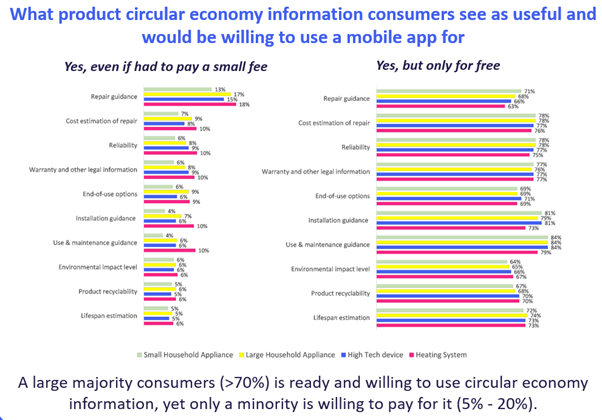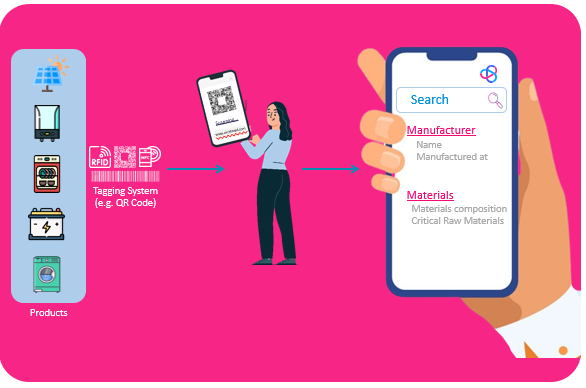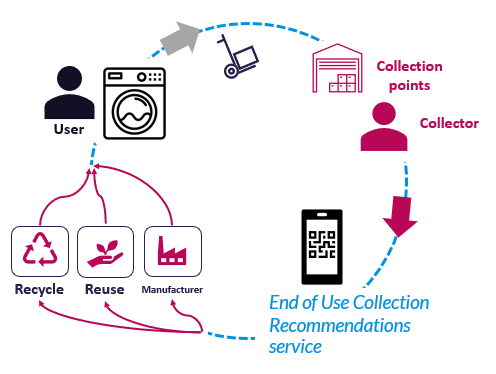On the 7th of December CircThread Project Partner WEEE Forum is organising the world’s first supranational Extended Producer Responsibility (EPR) legislation conference about e-waste

The conference will reflect on the past and ponders the future of e-waste based on four grand challenges. The CircThread project embraces the challenges and below we provide insightful responses to the challenges based on project results in its first 18 months.
The views in this article were written by Dr. Rembrandt Koppelaar from EcoWise, technical coordinator of the CircThread project, and reflect only the author’s views and insights.
Table of contents – The four WEEE Forum challenges:
#1 Delivering a Circular Economy – How can we incite citizens to return their e-waste?
#2 Producer responsibility in an international context – How can we propel e-waste collection across the world?
#3 Transitioning to a low carbon economy – How can the e-waste collection sector foster access to critical raw materials?
#4 A new vision on EPR in future WEEE legislation – What changes to Extended Producer Responsibility legislation are required to deliver the circular economy?
#1 How can we incite citizens to return their e-waste?
Citizens often throw their small e-waste in a leftovers waste bin at home. In contrast larger e-waste is nearly all collected or brought to collection centres, yet the quality of recycling varies depending on its processing by industrial recyclers or scrap dealers. One part of the solution is to make it very visible to citizens what happens with the unwanted e-waste that is thrown out or collected, so that citizens are aware what happens, to change their patterns of behaviour.
Digital Product Passports can support creating this visibility for citizens. The status of products with a wire can be registered in the Digital Product Passport at the point of sale, during use, when collected, at preparation for-reuse, and when undergoing pre-treatment and recycling. Applications built on top can create the visibility that citizens need to make them aware how recyclable their product is, what happens with their e-waste, and how much recycling is actually achieved.
To evaluate the interest of citizens in such a system, similar to existing APPs for parcels tracking and tracing, CircThread project consumer organisations Altroconsumo and OCU carried out a survey among 4000 citizens in four countries in Italy, Spain, Portugal and Belgium. It established that 4 out of 5 citizens would be willing to register their device in an APP linked to a Digital Product Passport as long as it is managed by manufacturers on an anonymous basis, that 3 out of 4 citizens would use a mobile application to understand the end-of-use collection options and recyclability of products, and that almost 2 out of 3 citizens would be willing to actively report in the APP when their product is collected for recycling or disposed of as long as there is some benefit provided.

#2 How can we propel e-waste collection across the world?
The more valuable e-waste collection can be made the faster it will be propelled across the world. One part of the solution is to sharply reduce the cost of pre-treatment and recycling in a low to middle income country context, driving up the purchase value potential from collectors. To do so, improvements are needed by manufacturers to make manual separation and disassembly both easier and more effective. Higher quality component and material streams from disassembly processes will result in more optimised shipments of components & materials. This will also result in better performing pyro- and hydrometallurgical recycling processes. Reducing disassembly labour costs, the costs of reverse logistics, and the costs of sorting and purification.
In the CircThread project our partner Aarhus University is to this end advancing a new method to evaluate the disassembly effort needed to dismantle existing appliances. The approach will allow manufacturers to assess their product’s disassembly effort, identify the bottlenecks limiting disassembly, and provide design recommendations to reduce disassembly efforts. The method will be made publicly available in Q2 of 2023. CircThread will also go one step further and use the approach to build a software service for manufacturers to help with circular product design decision making.

#3 How can the e-waste collection sector foster access to critical raw materials?
The basis for providing access to critical raw materials for component reuse and recycling is a materials declaration. This contains a list of materials with their % weight in a product. It can also include where in a product a component containing critical raw materials can be found. The e-waste sector can, if it has available product model specific materials declarations linked to Digital Product Passports, improve reverse logistics to foster access to critical raw materials. A collection operator can then scan a product on-site, open its Digital Product Passport based materials declaration with a mobile application, and make more advanced product sorting decisions before shipment to a recycling facility.
Products could be sorted by collectors based on their critical raw materials content, and flagged based on the components that should be extracted that contain specific critical raw materials. Subsequently, producer responsibility organisations can improve their reverse logistics process, to send products and extracted components to specific critical raw materials processing capable recyclers. In the CircThread project we will evaluate this approach with pilot partners in Italy based on dishwashers, in Slovenia based on washing machines, and in Spain for boilers, solar glass and batteries.

#4 What changes to Extended Producer Responsibility legislation are required to deliver the circular economy?
The possibilities of Digital Product Passports and information exchanges across the product life cycle open up the possibilities for improving collection rates calculations and making ‘’missing e-waste’’ visible. The upcoming revision of the EU WEEE directive and other legislation that drives extended producer responsibility can steer towards this direction. At present EU member states have to report the annual collection rate of e-waste based on the WEEE directive. They have to do this either based on estimates of the e-waste generated during collection – or – on the basis of the average weight of electrical and electronic products placed on the market in the three preceding years. In the future, once Digital Product Passports are commonplace, it will become easy for collectors to scan and update these to make individual product collection data available, and for Producer Responsibility Organisations to log their journey from collection to reuse or recycling. The number of products by category and region can then be calculated in an instance in a given year, as well as the % collected that was prepared for reuse or sent for recycling. These changes can be linked to legislation to make it mandatory – once Digital Product Passports are universally introduced for a product category – to provide status updates on individual products during collection. The end results are accurate and transparent insights in the amounts of e-waste generated by comparing what is put on the market and what is collected.

Written by Rembrandt Koppelaar from Ecowise